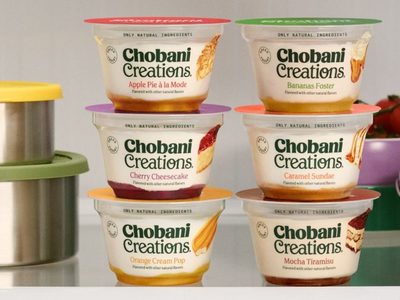CHICAGO — Emmi Roth USA, a business unit of the Emmi Group, Lucerne, Switzerland, kicked off its “The art of cheese” culinary tour in Chicago on March 21. The event showcased three culinary professionals, including chefs Chef Zoe Schor, formerly of Ada Street; Chef Chris Curren, Fulton Market Kitchen’s new chef; and Chef Claire Menck, corporate chef at Emmi Roth. The three chefs demonstrated the versatility of Roth cheeses and how they may help create culinary masterpieces.
“We hosted the event at Fulton Market Kitchen, which prides itself on providing guests with the opportunity to simultaneously indulge their passions for dining, drinking and art,” said Kirsten Jaeckle, marketing manager at Emmi Roth. “Every week a different artist transforms the lounge space into their personal studio, allowing guests to observe, engage and draw inspiration from their creative process, all while enjoying dinner and cocktails. ‘The art of cheese’ drew upon this landscape by bringing in an onsite artist to conduct live paintings on various Roth Cheese wheels.”
The event will travel around the nation using local chefs to demonstrate how cheese may add spin to regional dishes. For example, paying homage to Chicago’s large Polish population, Chef Zoe developed a loaded baked potato pierogi featuring Roth Prairie Sunset cheese. The cheese is a Wisconsin original, developed by Emmi Roth’s cheesemakers. It is sold in 10-lb wheels and intended for random-weight cutting at the cheese counter.

“We want to give customers, retailers, chefs and media the opportunity to interact with our product outside of the traditional ways we typically see from a sales standpoint,” Ms. Jaeckle said. “The events will provide the opportunity to celebrate the art of cheesemaking through not only the cheeses themselves, but also the culinary artistry that comes with them.
“This inaugural year of the series we’ve started with our customers. In the future we hope to open these events to the end user as well.”
Holding the event in a location such as the Fulton Market Kitchen drew on the connection of cheese being a form of art.
“Cooking with natural cheese is an art because cheese is a living, evolving ingredient in a dish,” said Claire Menck, corporate chef at Emmi Roth. “Even though we use standardized recipes and procedures when we make our cheese, each wheel takes on its own personality and unique profile. What this means for a chef is that they need to taste each cheese, every time, and adjust the recipe based on the flavor of that specific cheese.”

Chef Menck has more than 25 years of experience in the food service industry, covering the front, back and top of the house. She also has teaching experience, having been a chef-instructor at the New England Culinary Institute and the academic director at The International Culinary School at the Art Institute of Wisconsin. Her background has taught her to appreciate and respect cheese and its many nuances in a culinary environment.
For example, how a dish is prepared, especially when heat is applied, require flexibility and technique. Understanding how cheese reacts with heat is as much science as it is art.
“Older cheeses tend to get bitter and oil off when they are cooked,” Chef Menck said. “Younger cheeses actually develop more complexity when they are heated.”

Cheese composition impacts performance during cooking as well. Even under the most controlled manufacturing process, natural cheese making procedures yield variation. A culinary professional must be able to “feel the cheese” and adjust a recipe accordingly.
“The saltier the cheese, the less melt in the cheese,” Chef Menck said. “The higher the moisture content, the lower the melt point, while the higher the fat content, the better the melt. You need to understand all of these attributes of the cheese to know how to get it to work properly in a recipe.”
Cheese often is used in hot dips and sauces. Think fondue and nachos. Working with cheese under constant heat comes with a unique set of challenges.

“Cheese is sensitive to being held hot,” Chef Menck said. “Most of us have had a bad experience with a dip that got too hot and ‘breaks.’ The trick here is to use a starch ingredient to help bind the proteins. This is why many hot dips call for cream cheese or some other processed cheese, as these foods contain starches and other binding agents. Personally, I don’t want processed items in my food, so I use cornstarch or potato starch.”
Another option is to use new Roth Natural Melt Creamy Fontina. The only ingredients used are pasteurized cultured milk, enzymes and salt. It was developed in collaboration with the company’s corporate chefs and cheesemakers and is designed to melt in any hot food service application. Special cheesemaking techniques are used, allowing for a creamy, homogenous melt. The cheese has a rich, buttery taste and smooth, velvety texture, and is an easy way to elevate a host of menu favorites, from sauces, dips and mac and cheese to burgers, flatbreads and panini. It comes in 7.5-lb loaves and may be sliced, diced, shredded and more.




